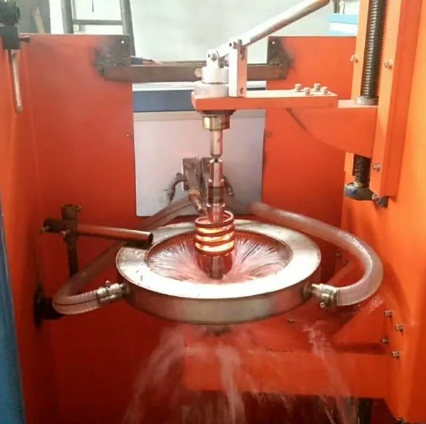- 23
- Mar
How hard should the high frequency induction heating power source be for quenching heat treatment?
How hard should the high frequency induction heating power source be for quenching heat treatment?
The hardness range of induction hardened parts is determined according to the performance of the parts, and is generally divided into the following categories:
1) When used for anti-wear (such as crankshaft journals, cams, raceways, rollers, surface of chain rails, etc.), the higher the hardness, the better the wear resistance. The hardness of the crank journal is generally 55-62HRC, the hardness of the cam surface is generally 56-64HRC, and the hardness of the surface of the tool file is generally 64-67HRC.
2) The hardness of workpieces used in crushing, torsion and shearing parts should be high, such as the surface of forge hammers, automobile axles, leaf spring pins, torsion bars, etc. The hardness is generally 56-64HRC, 50-55HRC Wait.
- For parts subject to impact load, or when the gear teeth, splines, etc. are partially quenched and require toughness, the hardness should be appropriately reduced. For example, the hardness of the engine flywheel ring gear is generally 48-56HRC or 40-48HRC. For gray cast iron, nodular cast iron and malleable cast iron parts, due to the existence of flake and nodular graphite, the hardness measured by the Rockwell hardness tester is the combined hardness of martensite and graphite. The hardness range of ductile cast iron is 45-55HRC, and the hardness of gray cast iron can reach above 38HRC or above 40HRC.

